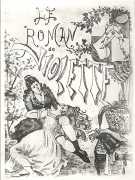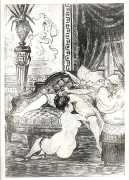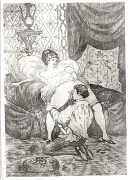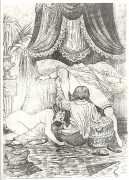‘Come,’ said the Countess, ‘I will stroke your body dry.’
Violette rose from the bath dripping with glistening drips of water, beautiful as Thetis and just as proud.
The Countess believed that she had vanquished her rival, meaning me, her humble servant, and looked quite triumphant.
Violette, borne in her arms, cast a glance towards me as if to say ‘All that I am doing is in obedience to your orders.’
The curtains were drawn, and the room was lit only by the light of the fire.
Both women came to the fireplace shivering. I could see that the Countess thought only of Violette. I could hear her, while plying the towels, praising each part of the form on which her hand rested in turn. Each received its share of caresses, of praise. The neck, arms, back, shoulders, breasts, all in order.
As for Violette, the heat of her person sufficed to dry her skin. She remained passive under the caresses of the Countess.
Le roman de Violette is the tale of a beautiful girl, the object of desire for both a young man and a rather determined lesbian countess, culminating in a memorable menage-a-trois. It was first published in Brussels by Augustin Brancart in 1870, followed in 1883 by this illustrated edition with six Frédillo illustrations, probably published by Henry Kistemaeckers. An English translation was published, possibly by Mlle Doucé, in 1891.
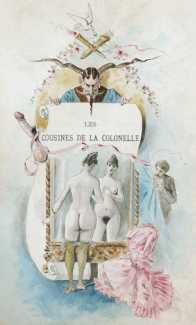
As it was published without any indication of an author, for many years it was thought that Le roman de Violette came from the pen of Théophile Gautier, Alexandre Dumas or Guy de Maupassant. It is now accepted that it was written by the Marquise Henriette de Mannoury d’Ectot, born Henriette Nicolas Le Blanc (1815–99), who was the first woman novelist to work in a modern erotic genre. At the time of the Second Empire, the Marquise Henriette owned a pretty mansion near Argentan in Normandy, where she organised literary gatherings, the guests including Paul Verlaine, Charles Cros and Guy de Maupassant. She is also the author of the erotic novels Les cousines de la colonelle (The Colonel’s Cousins, 1880) and Mémoires secrets d’un tailleur pour dames (Secret Memoirs of a Lady’s Tailor, 1880), both of which were published with the pseudonym Vicomtesse de Cœur-Brûlant, cœur-brûlant translating as ‘burning heart’.


